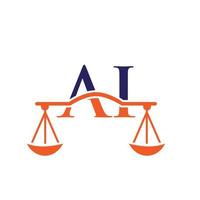
AI.Law: Complete Buyer's Guide
Transforming litigation workflows with integrated document generation and strategic case development capabilities.
AI.Law positions itself as a comprehensive legal AI platform that transforms litigation workflows through integrated document generation and strategic case development capabilities. Unlike specialized deposition tools, AI.Law delivers what it describes as a "patent-pending document generation system" that combines deposition analysis with complaint drafting, motion preparation, and comprehensive litigation support within a single platform[48][51].
Market Position & Maturity
Market Standing
AI.Law operates as an established player in the legal AI market, having achieved sufficient market recognition to receive independent evaluation from legal technology journalist Bob Ambrogi[53].
Company Maturity
The company's comprehensive platform approach positions it within the broader legal AI market valued at $1.9 billion in 2024 with projected 13.1% CAGR growth through 2034[13].
Growth Trajectory
AI.Law demonstrates operational sophistication through its five-tier pricing structure ranging from $49 monthly for basic capabilities to enterprise plans starting at $9,000 annually[51].
Industry Recognition
AI.Law maintains SOC 2 compliance and emphasizes ABA guidance adherence[48][51].
Strategic Partnerships
The platform's API integration model, demonstrated through Gray Paper Legal's implementation[52], indicates technical maturity and partnership ecosystem development.
Longevity Assessment
AI.Law's comprehensive platform approach and independent evaluation by Bob Ambrogi demonstrate market credibility and operational maturity beyond typical startup-stage vendors[53].
Proof of Capabilities
Customer Evidence
Gray Paper Legal successfully integrating AI.Law's capabilities through API deployment[52].
Quantified Outcomes
Sean Akari reports that AI.Law implementation "caused his law firm to grow," specifically stating "I settled more cases last year"[52].
Case Study Analysis
Paradigman, LLC reports that AI.Law "significantly reduced the hours that its inside litigation efforts used to take"[52].
Market Validation
The diversity of customer implementations across Gray Paper Legal's technology integration, Paradigman LLC's enterprise deployment, and individual practitioner adoption suggests broad market acceptance[52].
Reference Customers
Liu Law utilizes AI.Law to "quickly search for key information within large amounts of documents"[52].
AI Technology
AI.Law's technical foundation centers on "layered legal logic, structured reasoning, and jurisdiction-specific claim construction" designed to differentiate from basic prompt-based AI generators[48].
Architecture
The system's architecture integrates deposition analysis within a comprehensive litigation support ecosystem that includes complaint drafting, answer generation, dismissal analysis, claim identification, document summarization, discovery request generation, and medical summary capabilities[51].
Primary Competitors
Specialized deposition tools like DepoIQ and integrated case management platforms like Opus 2.
Competitive Advantages
AI.Law's integrated approach provides 8+ litigation capabilities within a single platform, potentially eliminating the need for multiple specialized tools and reducing workflow complexity[51].
Market Positioning
AI.Law differentiates through comprehensive litigation platform integration rather than specialized deposition functionality[51].
Win/Loss Scenarios
Choose AI.Law when organizations require comprehensive litigation support with deposition analysis as one component. Consider alternatives when primary focus is specialized deposition summarization efficiency.
Key Features

Pros & Cons
Use Cases
Integrations
Pricing
Featured In Articles
Comprehensive analysis of AI Deposition Summarization for Legal/Law Firm AI Tools for Legal/Law Firm AI Tools professionals. Expert evaluation of features, pricing, and implementation.
How We Researched This Guide
About This Guide: This comprehensive analysis is based on extensive competitive intelligence and real-world implementation data from leading AI vendors. StayModern updates this guide quarterly to reflect market developments and vendor performance changes.
56+ verified sources per analysis including official documentation, customer reviews, analyst reports, and industry publications.
- • Vendor documentation & whitepapers
- • Customer testimonials & case studies
- • Third-party analyst assessments
- • Industry benchmarking reports
Standardized assessment framework across 8 key dimensions for objective comparison.
- • Technology capabilities & architecture
- • Market position & customer evidence
- • Implementation experience & support
- • Pricing value & competitive position
Research is refreshed every 90 days to capture market changes and new vendor capabilities.
- • New product releases & features
- • Market positioning changes
- • Customer feedback integration
- • Competitive landscape shifts
Every claim is source-linked with direct citations to original materials for verification.
- • Clickable citation links
- • Original source attribution
- • Date stamps for currency
- • Quality score validation
Analysis follows systematic research protocols with consistent evaluation frameworks.
- • Standardized assessment criteria
- • Multi-source verification process
- • Consistent evaluation methodology
- • Quality assurance protocols
Buyer-focused analysis with transparent methodology and factual accuracy commitment.
- • Objective comparative analysis
- • Transparent research methodology
- • Factual accuracy commitment
- • Continuous quality improvement
Quality Commitment: If you find any inaccuracies in our analysis on this page, please contact us at research@staymodern.ai. We're committed to maintaining the highest standards of research integrity and will investigate and correct any issues promptly.